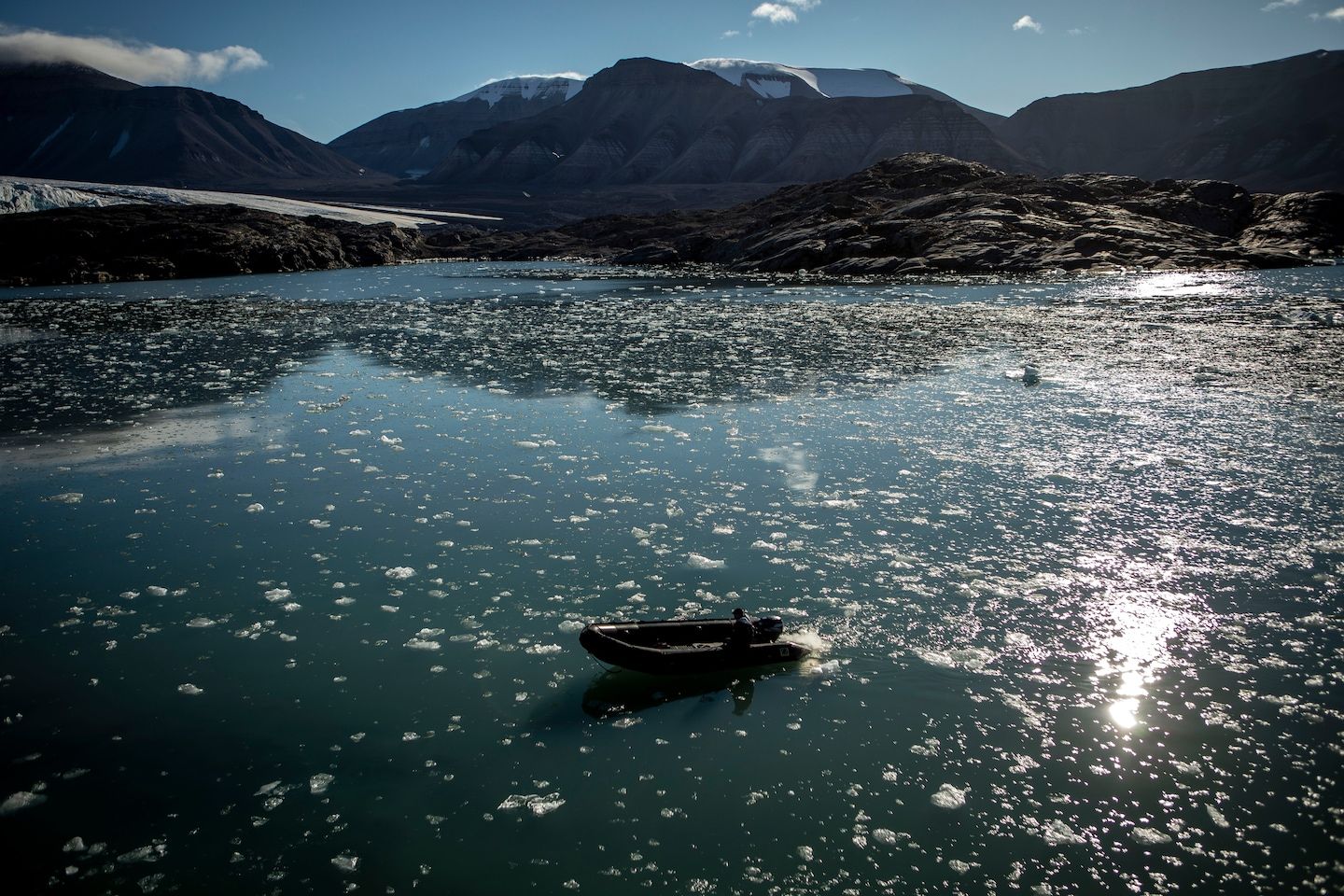The Arctic may have summers with no sea ice sooner than projected
Listen 3 min Comment on this story Comment Gift Article Share
A much-feared moment — a summer in which the Arctic Ocean features almost entirely open water — could be coming even sooner than expected and has the possibility to become a regular event within most of our lifetimes, according to a new study. Want to know how your actions can help make a difference for our planet? Sign up for the Climate Coach newsletter, in your inbox every Tuesday and Thursday. ArrowRight Experts have long feared at least an occasional dwindling of floating Arctic ice down to minimal levels by 2050, with a greater risk as humans emit more greenhouse gases. The new research, though, suggests that even in a fairly low-emissions scenario that holds the planet’s warming to below 2 degrees Celsius, regular years without summer Arctic sea ice could occur in the 2050s.
The trend gets worse as the emissions levels increase. In the worst-case scenario, the study said, there is a possibility that the Arctic could have Septembers with no ice as soon as the 2030s, a decade earlier than previous research indicated.
Advertisement
“We do seem to be destined to see ice-free summers in the Arctic. That seems to be baked in at this point,” said Mark Serreze, director of the National Snow and Ice Data Center in Boulder, Colo., who was not associated with the study. “The question has always been when.”
Arctic sea ice follows an annual cycle, peaking in the unbroken darkness of winter and then dwindling in the equally constant glare of summer. Even if ice does dip below 1 million square kilometers in area at the summer low in September — a threshold deemed to represent a basically ice-free ocean — that does not mean it won’t rebound quickly in the winter or persist through summer the next year. Much depends on weather. But the warming of the Earth makes it easier for the ice to melt and harder for it to rebound.
The impacts will be far-reaching, threatening communities, harming ecosystems and exacerbating global warming, scientists said.
Advertisement
“The impacts are already upon us, and they are growing. You could still have a fair bit of sea ice out there in summer and have very important or tremendous impacts on fish species, phytoplankton blooms on the people of the north,” Serreze said.
Without sea ice, the Arctic will also warm faster. Arctic ice sends solar radiation back to space, because bright ice reflects more than the dark ocean. If the ice melts, additional solar energy will be added to the region, increasing planetary warming.
“Disappearing sea ice will add an enormous amount of additional solar energy to the Arctic,” said Veerabhadran Ramanathan, a climate scientist at the University of California at San Diego.
The authors of the study, which was published in the journal Nature Communications, compared years of satellite observations of Arctic ice to 10 existing climate models. The satellite imagery showed a starker loss in Arctic ice than climate models projected, informing the authors’ predictions of an even faster decline, said Nathan Gillett, a climate scientist and one of the study’s authors.
Advertisement
The authors then ran the updated models under four potential scenarios for greenhouse gas emissions. Under the best-case scenario, the Arctic would be ice-free most Septembers by 2050. Under the worst-case scenario, the Arctic would experience Septembers without ice by the 2030s. This could grow to be several months without ice later in the century.
Gillett said reducing emissions will reduce how quickly ice is lost.
“Reducing emissions will limit warming,” he said. “It does make a difference as to how much ice we have.”
GiftOutline Gift Article
Source: The Washington Post


